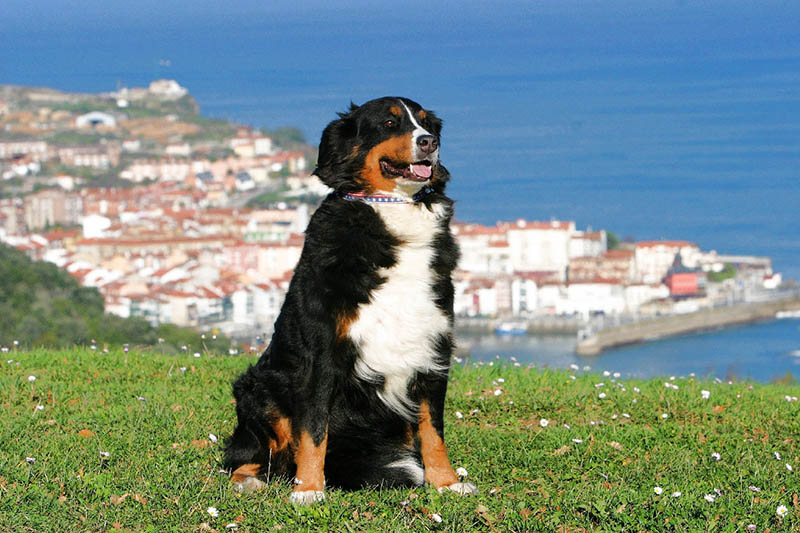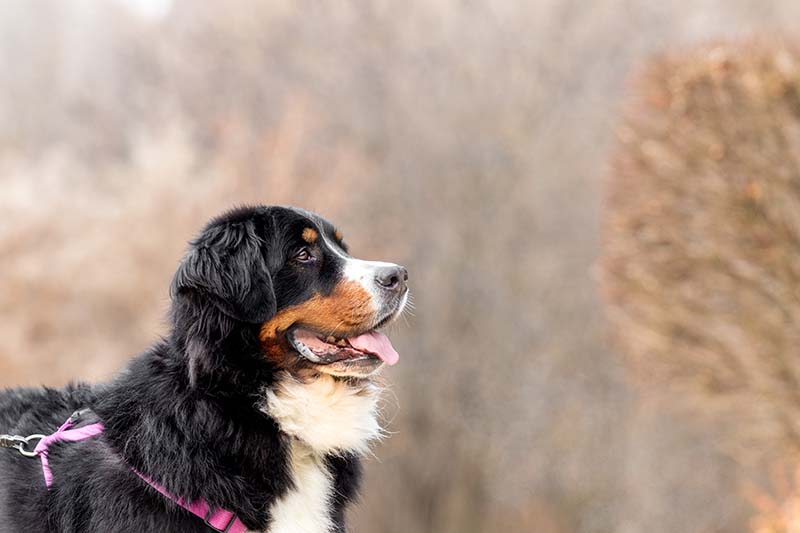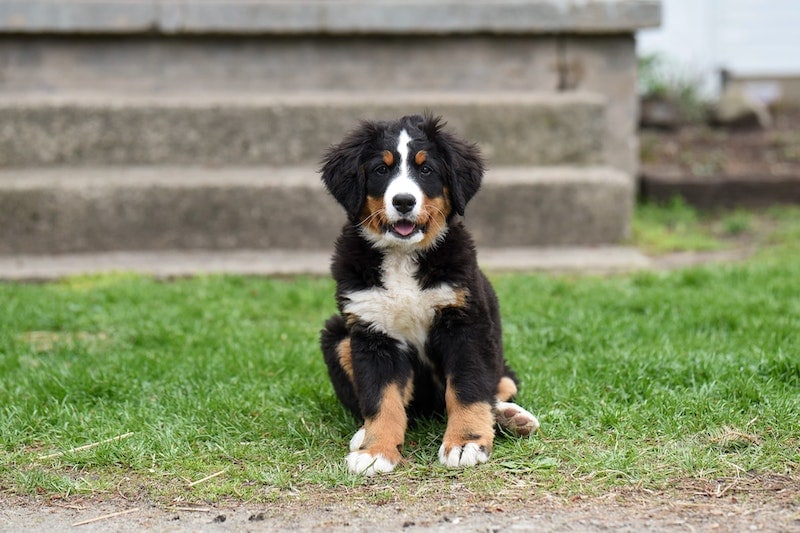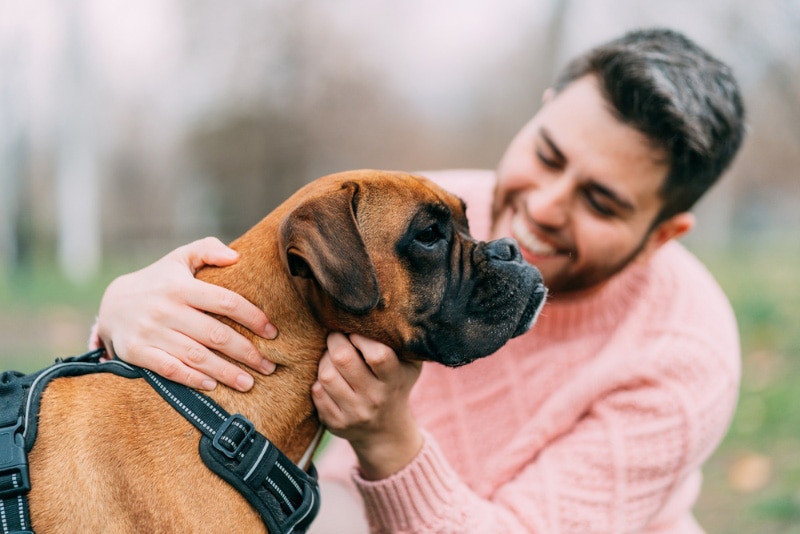What Size Crate Does a Bernese Mountain Dog Need? Measuring Guide & Tips

Updated on

The Bernese Mountain Dog is a large, gorgeous, energetic, and powerful breed. They make incredible companions for a suitable owner willing to put in the necessary time and care.
With its size and strength comes the necessity for a crate that can accommodate those qualities while providing comfort and security. This means the crate you purchase for your Bernese Mountain Dog must be strong and sturdy to withstand its strength if it decides to escape.
In this article, we’ll help you determine the right size crate for your Bernese Mountain Dog, along with some successful crate training tips.
How to Choose the Right Dog Crate?
Choosing the right type of crate will depend on a variety of factors. They are usually available in different styles, materials, and sizes. To choose the right crate, you should consider the following:
- The size of your dog
- Your dog’s age and how much bigger your puppy will get
- Does your dog prefer a closed den-likearea or visibility from an open crate?
- Climate of where you live
- Do you need the crate for home use, travel, or both?
- Is there a style you prefer to suit your home?
These are basic considerations, but they can help narrow down the elements you are looking for.
What Size Dog Crate Does a Bernese Mountain Dog Need?
Getting the size of your dog’s crate is very important. It should allow enough space for your dog to move around, but your dog shouldn’t be too cramped. There should be enough space for your dog to turn around and sit upright without hitting its head against the top of the crate. Your dog should also be able to stretch out its legs if it prefers lying on its side.
Dog owners tend to choose crates that are too large because they want to provide extra space, but their usefulness as a training tool is decreased if they are too big. If your dog crate is too big, they will usually use one corner as a bathroom, defeating the goal of using a crate for potty training. Furthermore, a crate that is too big will allow too much space and often take away the feeling of security too.
An adequate crate size for an adult Bernese Mountain Dog is usually around 36″ L x 24″ W x 27″ H or 40″ L x 26″ W x 30″ H.

What about a Puppy?
As you know, puppies grow fast! For this reason, we recommend not spending too much money on a crate for your puppy. When your puppy has reached adult size, you can opt for a more expensive and stylish crate that can be used and enjoyed for longer.
Obviously, changing crate sizes for each life stage can become costly, and a great option is to purchase an adult crate and a divider to reduce the size so that it is suitable for your pup. A divider is a movable wooden or wire panel that you can insert into the crate and adjust as needed.
How to Measure Your Bernese Mountain Dog for a Crate?
Crate sizes are typically guidelines for common dog breeds. Every dog is unique, and even though their species has a general size, they still may differ when you take gender, weight, and the possibility of mixed ancestry into account. Measuring your dog and following the crate size guidelines can help you find the right size for your pup.
A Bernese Mountain Dog is a large breed that generally measures 23–27.5 inches from paw to shoulder and ranges from 70–115 pounds. If your Bernese is an adult, you must measure its height and length. Once you have the height and length, the width will be proportional, so it’s not necessary to measure the width. Have your dog stand against a wall so that you can mark the measurements with chalk and measure using your tape afterward.
To accurately measure your dog’s length, measure from the tip of the nose to the base of the tail. If you include the entire length of your dog’s tail, the crate may be too big. Try to get your dog to sit upright and measure from the floor to the tallest part of the head to measure the height.
Once you have the measurements, you can add 2–5 inches to get the correct ones for your crate. If the crate is a few inches bigger, it won’t matter much, but anything more will be too big.

Benefits of a Dog Crate
When measuring your dog and finding the correct size, you may feel a little overwhelmed and concerned that you will get the wrong crate, which could lead to questioning whether you should use one.
Crate training can benefit dogs of any breed or age and has many benefits.
- Enclosed areas create a shelter and a place for your dog to feel secure and relaxed. Dogs instinctively seek out small spaces to build protective shelters for themselves.
- They are useful training tools for all dogs of any age, especially puppies.
- Crate training is excellent for housebreaking puppies as they don’t like to soil their living space, so they learn to hold their bladders.
- Crate training teaches your dog to cooperate, so in an emergency, they will happily climb into their crate.
- Crates provide a familiar place for them to rest.
- Crates teach dogs to self-soothe and calm down.
- Crates make it easier to transport dogs safely when traveling in long car rides or planes.
- Crate training can improve a dog’s confidence.
Keeping your Dog Safe During Crate Training
Crate training must be done correctly to prevent your dog from feeling trapped and frustrated. Here are some tips to keep your dog safe and for successful crate training:
- Never use a crate as a tool for punishment.
- Don’t leave your dog in its crate for too long. If they are crated too long, they will miss out on human interaction and exercise and may become anxious or depressed.
- Puppies shouldn’t be crated for longer than 3–6 hours.
- Use a crate until your dog can control its bladder without accidents. From there, you can allow it in an enclosed area of the house.
- Your dog’s crate should always have a comfortable bed.
- Leave the crate door open when you are home so your dog can use it when it needs to be alone or rest.
In Conclusion
A Bernese Mountain Dog is a large and powerful breed that requires a crate to match those qualities. Your dog’s crate shouldn’t be too big but also not too small so that your dog feels cramped. Crate manufacturers usually include size guides, but it is also helpful to measure your dog to ensure the size you choose is correct. Your dog’s crate should provide a comfortable, safe, and secure space to rest, and proper crate training is essential to prevent your dog from feeling unsafe and frustrated.
Featured Image Credit: Jumpstory












